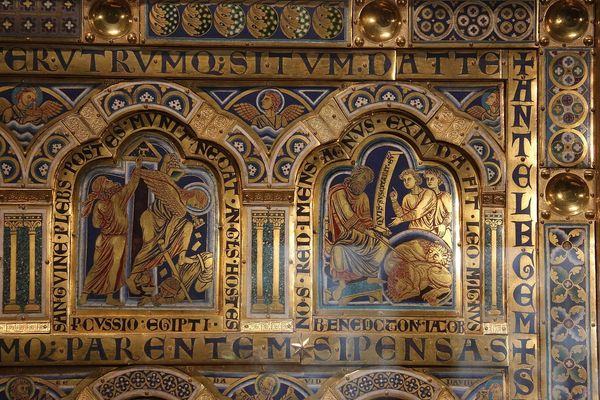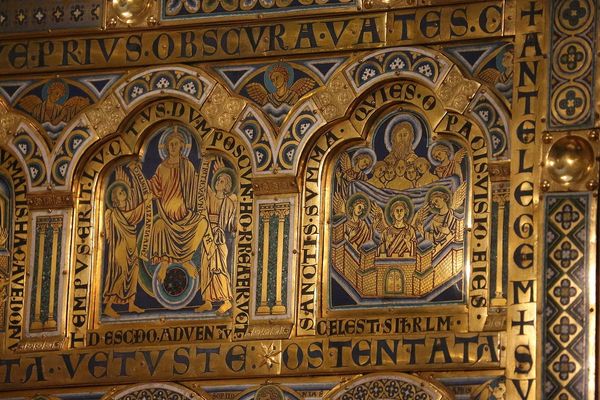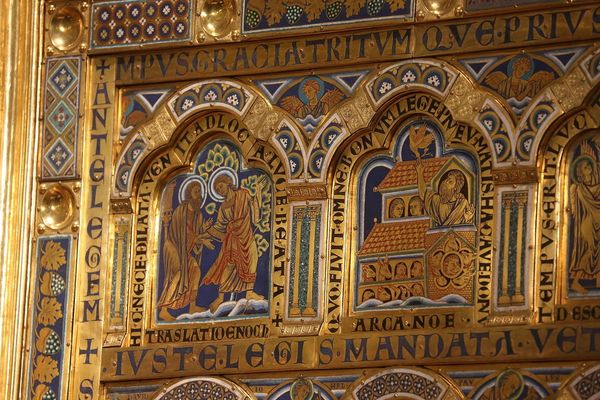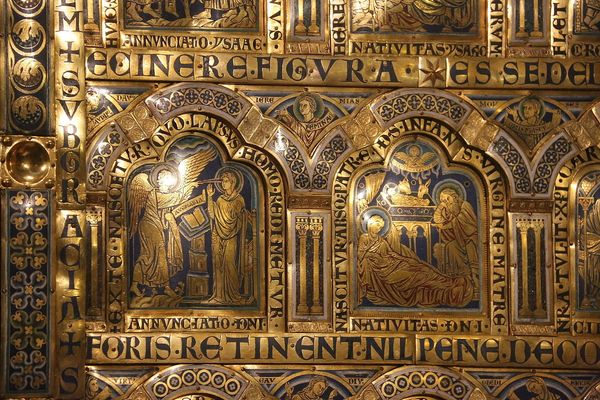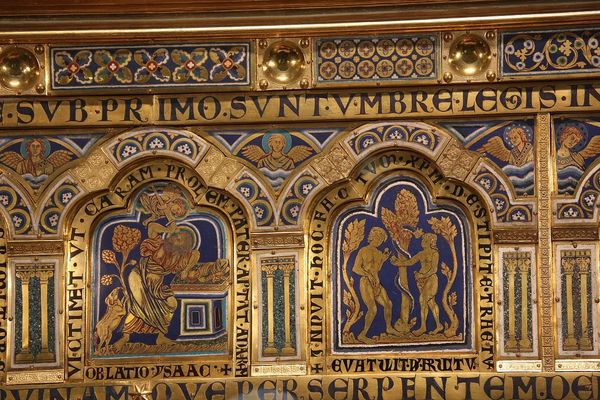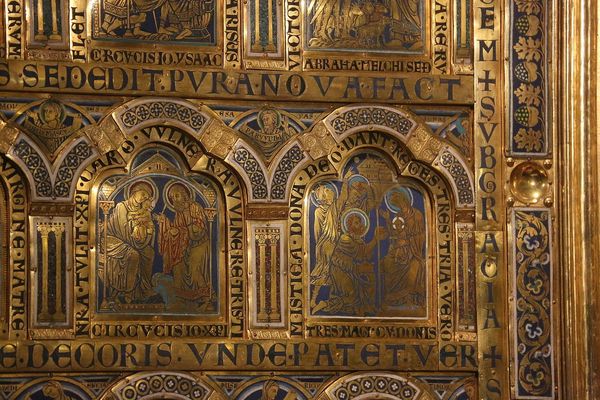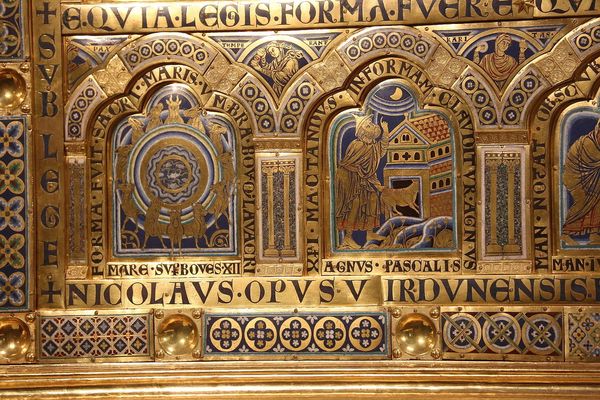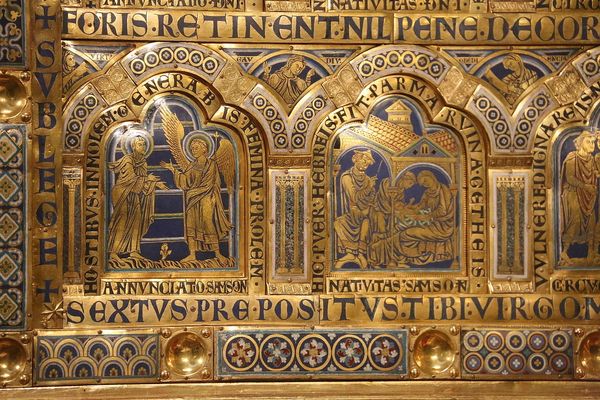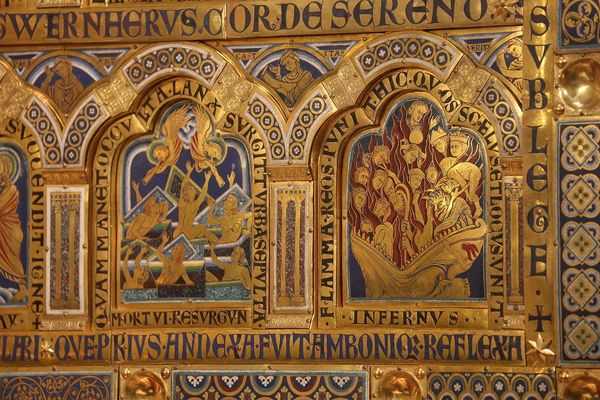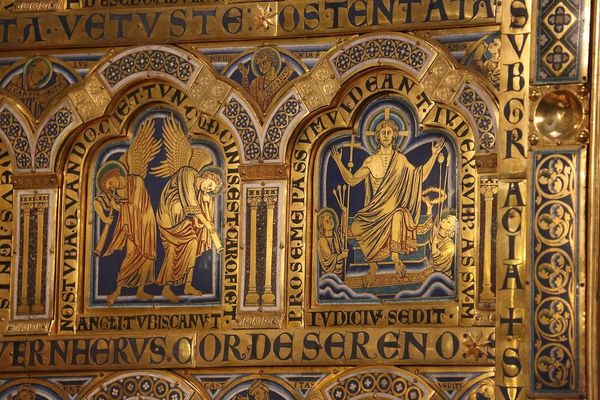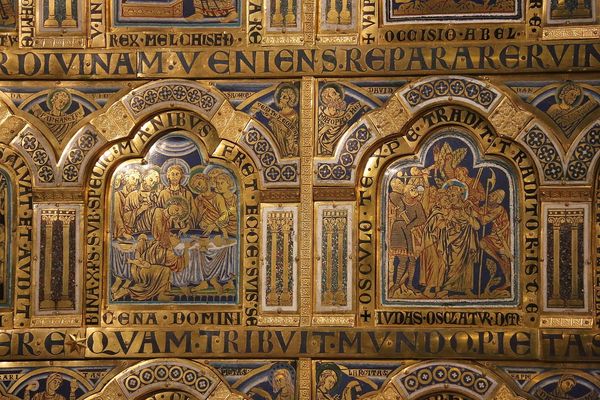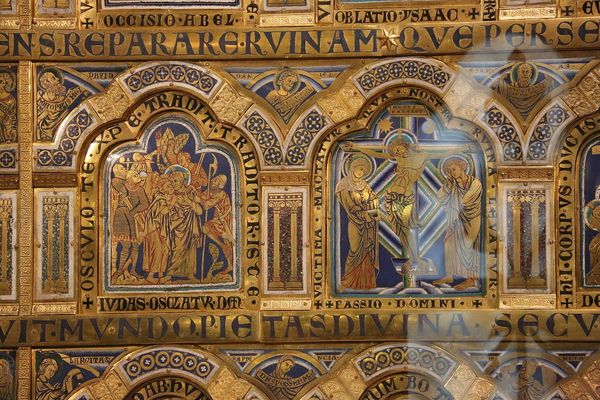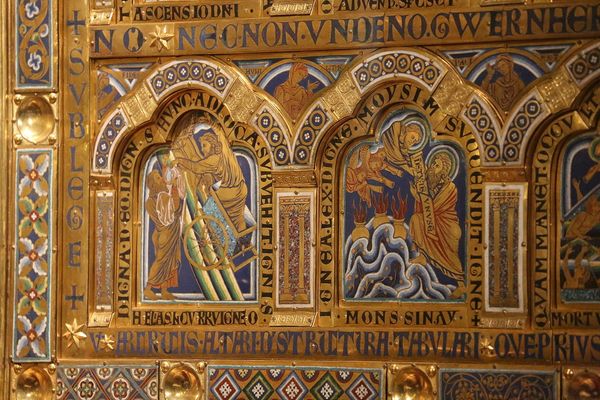
mosaic, carving, metal, gold, relief, sculpture
#
mosaic
#
medieval
#
carving
#
narrative-art
#
metal
#
sculpture
#
gold
#
relief
#
figuration
#
historic architecture
#
romanesque
#
sculpture
#
islamic-art
#
history-painting
Copyright: Public domain
Curator: So, here we have part of the Klosterneuburg Altar, crafted around 1181 by Nicholas of Verdun. It's a dazzling ensemble of gilded panels depicting scenes from the Old and New Testaments. Editor: Dazzling is right. It’s a shimmer-fest, almost overwhelmingly gold at first glance. Each scene feels so contained, like looking into a series of jewel-box narratives. Curator: Exactly! Nicholas arranged the panels to mirror each other typologically; Old Testament events prefiguring those in the New. Visually and theologically dense. Note the relief work, the intricacy of the figures, and the borders brimming with geometric mosaics. Editor: It's like he’s built a golden cage for stories, yet the characters don't seem trapped. They’re stylized, almost ethereal, each gesture so deliberate. The inscriptions framing each scene… do they clarify or complicate, do you think? Curator: I see them as layered inscriptions, they enhance, giving specific readings from scripture and the artist’s understanding in how this plays out for humankind as divine instruction. It provides keys to unlock each visual analogy within each panel. Take this panel with a queen meeting an emperor and their retinues for example. Can you identify those depicted? Editor: Queen Sheba meeting Solomon of Jerusalem. So their wisdom being exchanged relates in the new covenant to how three wise men saw the newborn messiah. Right. But then why such heavy outlines on every form? Curator: Romanesque art often favored clarity and readability, even at the expense of naturalism. The strong outlines define forms, and enable light and shadow in service of easily following along, guiding the eye. This altar was meant to be "read" by a largely illiterate audience, a constant and persuasive reminder of the divine plan. Editor: A Bible in gold, if you will. And the sheer amount of gold—it screams opulence, power, divinity. Does that ever overshadow the narratives themselves, do you think? Does the medium eclipse the message, occasionally? Curator: I wouldn’t say eclipse, as one needs the other to relay an understanding and commitment to religious and earthly power, in that time they reinforced one another in an active way. It invites you into its stories with a glow. These objects of devotional intent created lasting and present value for all audiences in this respect, for ages. Editor: You know, looking closely, it is like peering into different tiny universes, where all characters act and breathe under gilded light of old stories that become new every time someone new stares back.
Comments
No comments
Be the first to comment and join the conversation on the ultimate creative platform.
